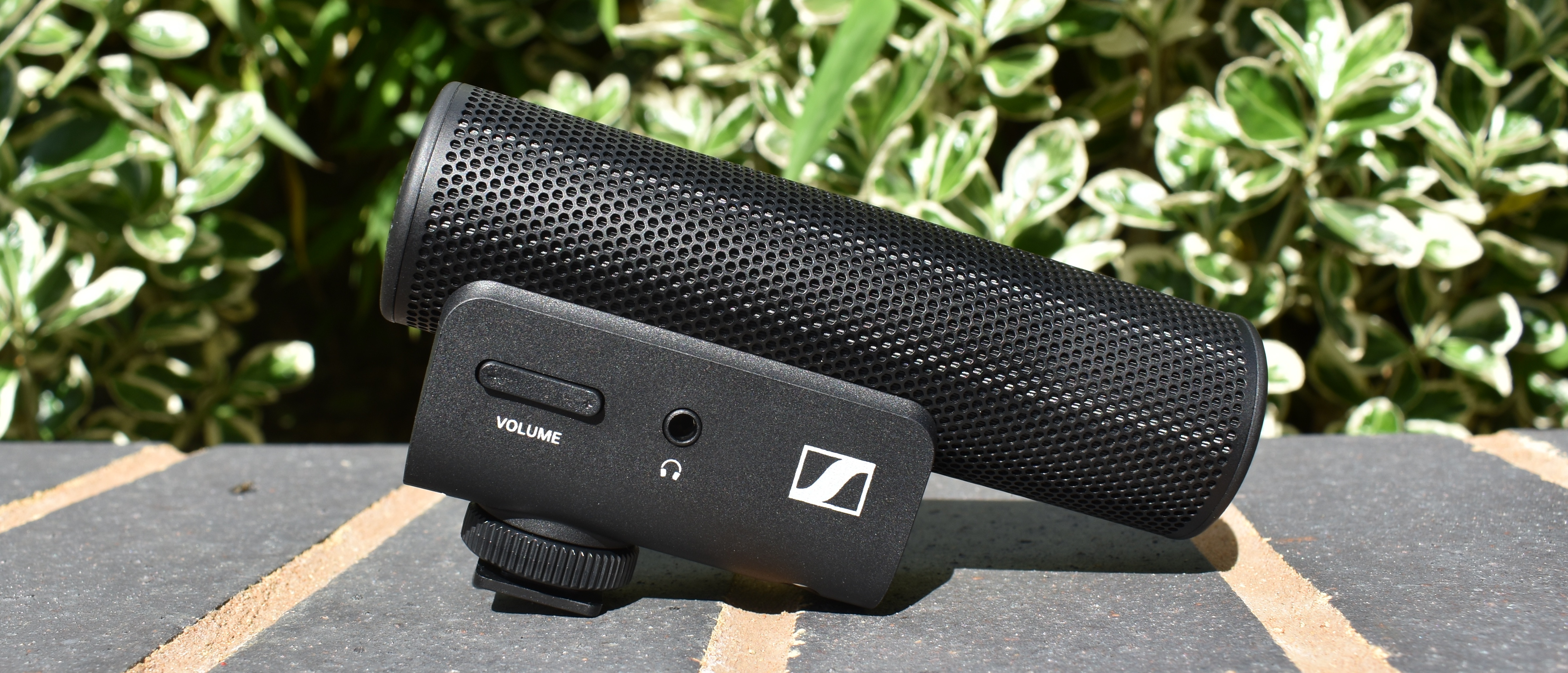Tom's Guide Verdict
The Sennheiser MKE 400 isn’t just a clean-sounding, nicely compact shotgun mic; with its smartphone support and easy setup, even inexperienced users can get quality recordings.
Pros
- +
Compact design
- +
Easy to use, including with phones
- +
Respectable sound quality
Cons
- -
Basic controls
- -
Can be susceptible to wind noise
Why you can trust Tom's Guide
The Sennheiser MKE 400 is a shotgun microphone designed to slot into the hot shoe mounts of DSLR cameras. This new, 2nd-gen model looks and sounds like a serious piece of “prosumer” gear, but more casual video shooters needn’t look away: the MKE 400 also has a simplistic side that can drastically boost the quality of smartphone camera clips.
Connection: 3.5mm TRS/TRRS
Ports: 3.5mm headphone out
Condensers: 1
Directional patterns: Super cardioid
Size: 5 x 2.6 x 1.5 inches
Weight: 3.3 ounces
While the most ambitious of aspiring videographers won’t find it a complete recording solution, the MKE 400 could still be one of the best microphones for amateur video recording. Our full Sennheiser MKE 400 review will explain why.
- The best microphones for gaming, streaming and podcasting
- Our picks of the best cameras
Sennheiser MKE 400 review: Price and availability
- The MKE 400 is priced at $199
- Check multiple retailers if sold out
The MKE 400 is neither astoundingly cheap nor prohibitively expensive for a compact shotgun microphone. At $199 it’s also priced identically to the original MKE 400; you can tell the two apart by the newer version’s shorter mic and more boxy shape.
Sennheiser sells the MKE 400 directly, but is currently sold out. You can grab it from Amazon or B&H instead, for the same price.
Sennheiser MKE 400 review: Design
- Light and compact
- Limited controls, but easy to use

Unlike boom mics, shotgun mics like the MKE 400 are intended to affix to the top of your camera for easy handling. To that end, Sennheiser has kept the MKE 400 appreciably small and light. It’s plasticky, but doesn’t feel brittle or insubstantial, and I like how the 3.5mm mic output has moved from the rear to the front. This prevents the detachable cable from dangling in front of your camera or phone display.
Speaking of phones, you’ll need to buy a case or stand with a camera-style hot shoe to mount the MKE 400, but otherwise it’s incredibly mobile-friendly. In addition to the standard 3.5mm TRS (tip/ring/sleeve) cable for DSLR and mirrorless cameras, there’s a TRRS (tip/ring/ring/sleeve) cable specifically for your smartphone’s headphone jack.
Simply plug this in — or use an adapter if your phone lacks a headphone jack — and you can get started. An auto-power feature makes things even simpler, as while the MKE 400 has a power button, it will turn itself on whenever it’s plugged in and will turn itself off upon disconnection.
Get instant access to breaking news, the hottest reviews, great deals and helpful tips.
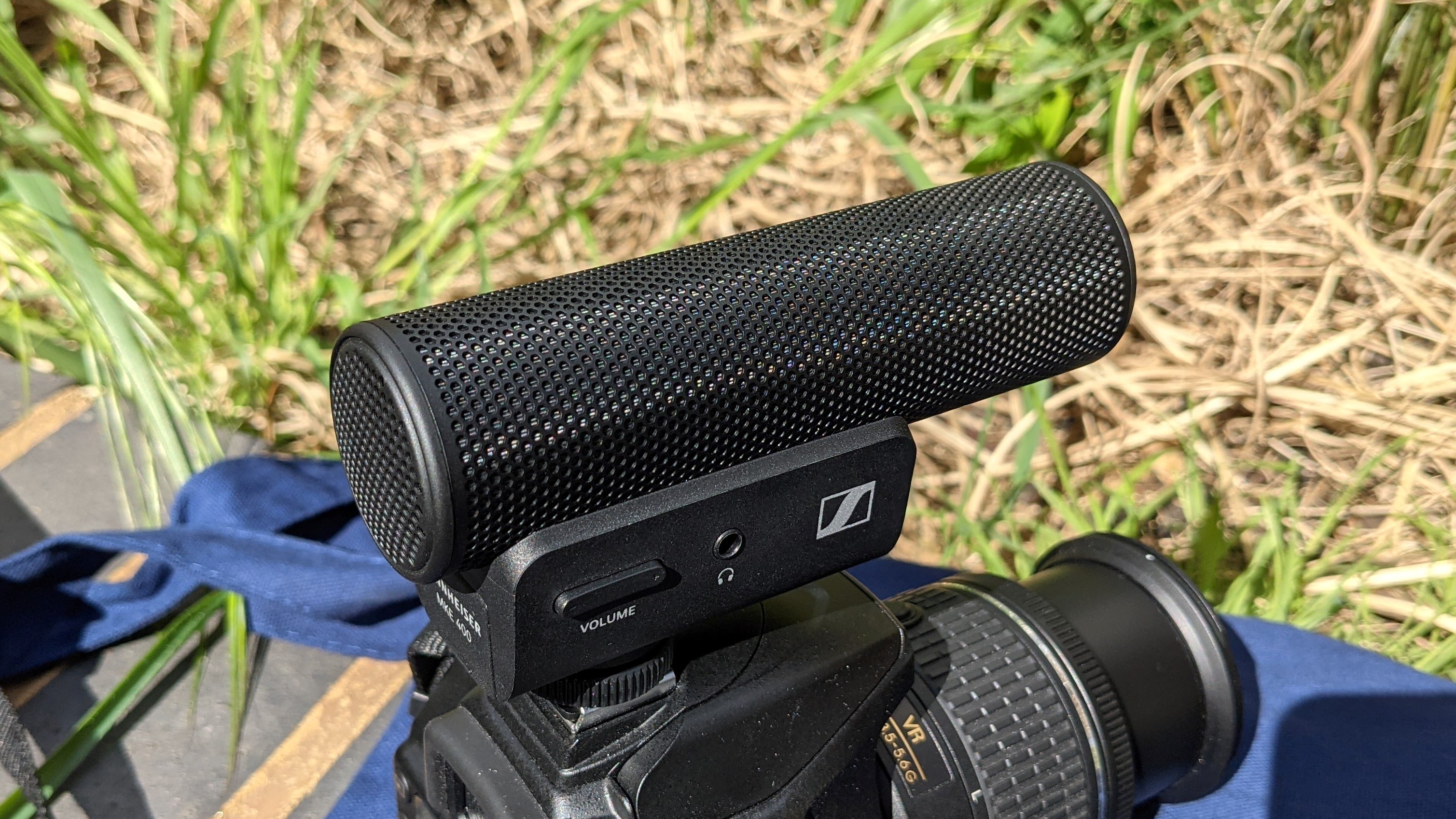
The integrated controls are pretty basic, but offer at least some recording flexibility. There’s a gain switch to optionally add or cut out 20 decibels, along with a low cut filter, which promises to remove unwanted low-frequency sounds. This could be noises like nearby cars, or just the vibrations from handling the MKE 400 while recording.
On the opposite side of the casing is one of the new MKE 400’s big additions: a headphone jack for mic monitoring, so you can hear how your footage will sound as you shoot it. Along with its 8-step volume rocker, the headphone jack is very helpful when you’re filming anything other than yourself, and makes this version of a MKE 400 considerably more practical than its predecessor.
The MKE 400 solely employs a supercardioid recording pattern, meaning it mainly records within a narrow space directly in front of the mic. However, this pattern also picks up sounds directly behind the mic as well, so you’ll need to be mindful of where the MKE 400’s rear is pointing just as much as its front.
Sennheiser MKE 400 review: Sound quality
- Good speech clarity
- Strong directional effect
- Windshield partially effective
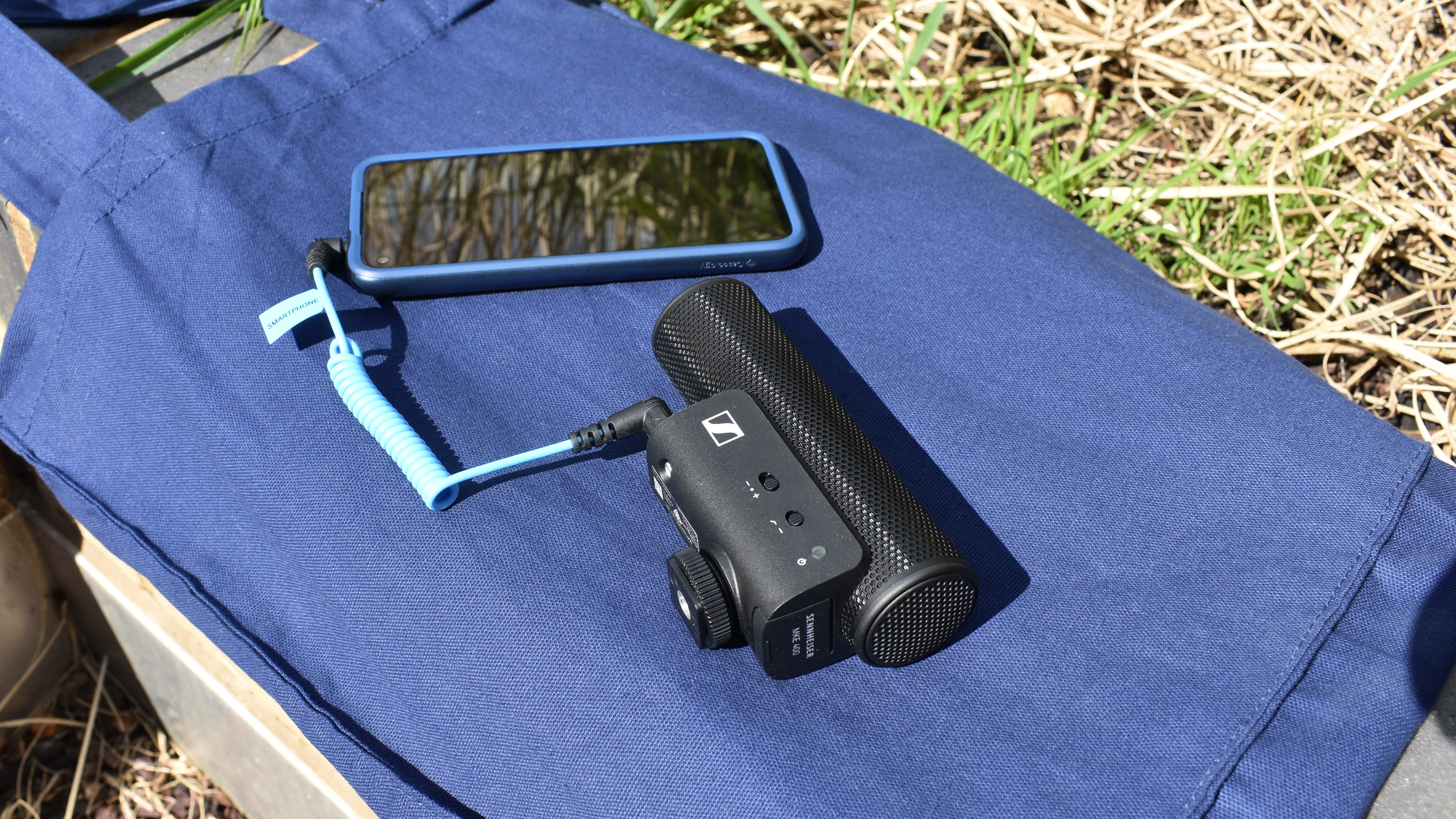
Indoors, the MKE 400 produces crisp, clear speech, as you’d want and expect. Provided the MKE 400 is correctly pointed at the speaker, its recordings prioritize their voice over any background noise, and keeps incidental sounds like clothes-rustling to a minimum.
There was a pleasantly huge difference between using my phone’s own microphone and the MKE 400. My Google Pixel 4a mic is no slouch at recording speech but also picked up unwanted sounds like foot-tapping, a consequence of its less focused directional recording. The MKE 400 didn’t just provide better overall clarity but picked up far fewer unwanted sounds, and recorded less reverb indoors too.
For vlogging and travelogues, the MKE 400 will help produce sufficiently clean recordings
Outdoors, background sounds like traffic and the occasional screaming child were clearly audible with the low cut filter off, but were kept to a minimum with it switched on. They weren’t entirely eliminated, though, so you should probably stick to lavalier mics if you just want to record a presenter’s voice in busy areas. Still, for vlogging and travelogues, the MKE 400 will help produce sufficiently clean recordings.
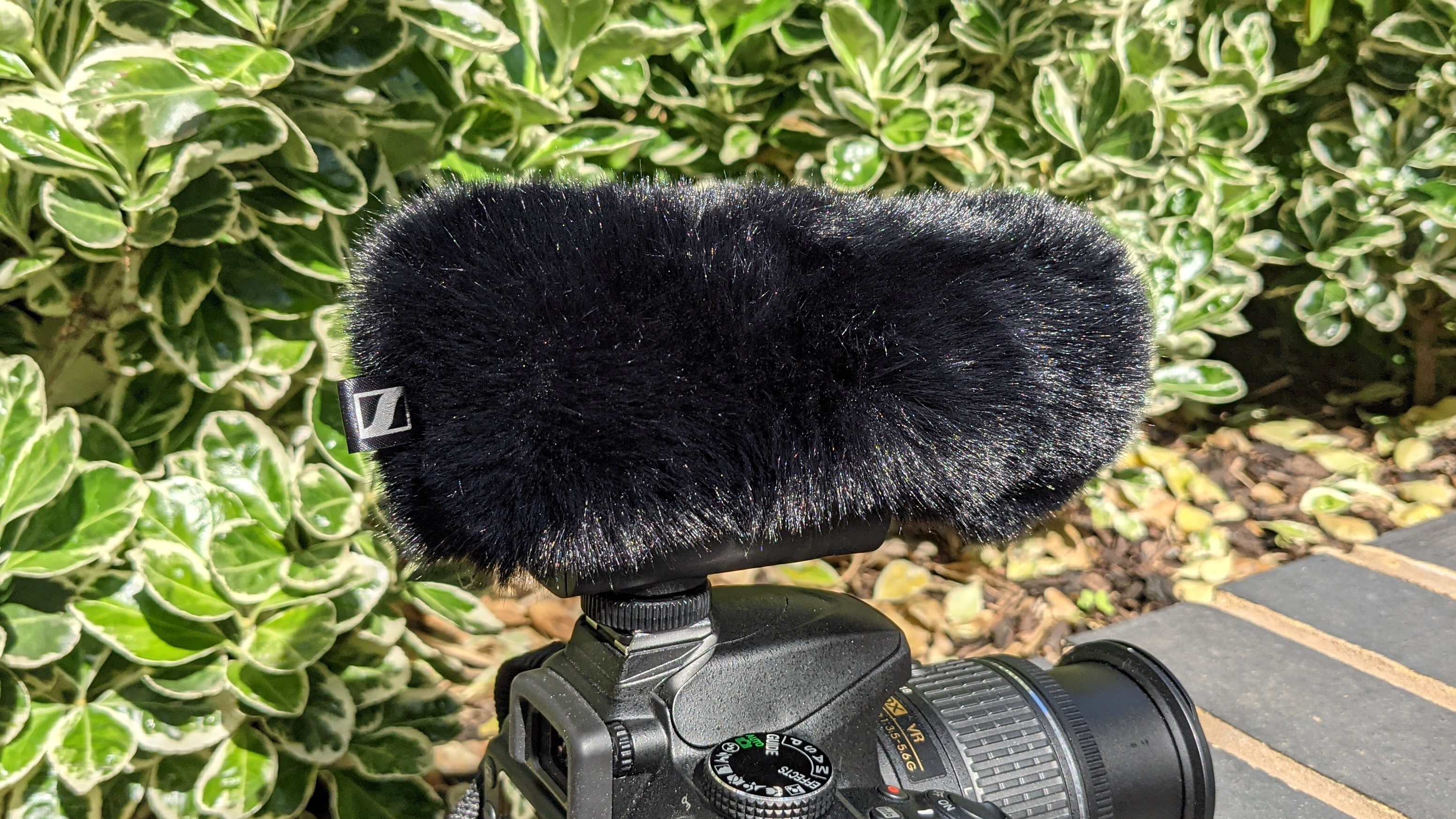
The MKE 400 is resistant to light wind, even without the delightfully fluffy windshield you get in the box. However, when the weather gets truly blustery, you’ll be glad to have this accessory. It doesn’t completely block wind noise in these tough conditions, but at least reduces it to a low hum that you can easily speak over. The low cut filter helps too, as does leaving the gain switch at 0.
The MKE 400’s shock resistance also impressed me. Handling mics while they’re recording is a good way to add a bunch of random knocking and fumbling sounds, but I could pick up the MKE 400 by its base and wave it around without any audible rustling. That was true even when the low cut filter was switched off.
Recordings maintain a very strong left/right separation too, so it’s easy to tell where individual sound sources are in a scene.
Sennheiser MKE 400 review: Verdict
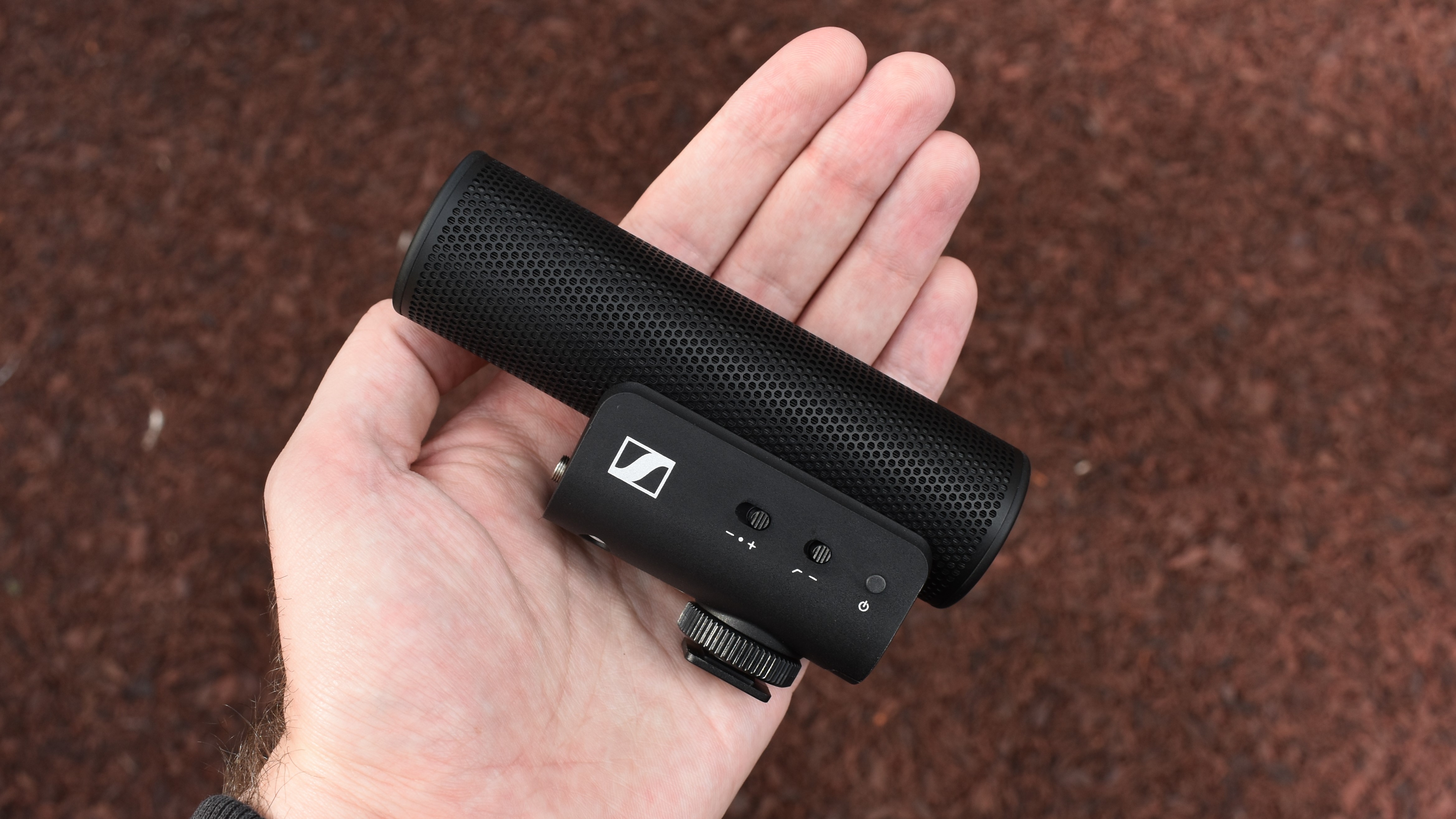
A device like the MKE 400, with its eagerness to work with smartphones, risks potentially awkward positioning. It’s not quite professional-level, but might also look like an unnecessary luxury for everyday phone usage.
Even so, it does manage to find a comfortable middle ground, and will serve as a great little mic for DIY content creation. If you’re vlogging or streaming, the MKE 400 will comfortably deliver the sound quality you need, and will do so without taking up much space in your bag or demanding three years of film school to operate. Indeed, it doesn’t even require a conventional camera.
- More: Check out the best headphones with a mic for voice and video calls

James is currently Hardware Editor at Rock Paper Shotgun, but before that was Audio Editor at Tom’s Guide, where he covered headphones, speakers, soundbars and anything else that intentionally makes noise. A PC enthusiast, he also wrote computing and gaming news for TG, usually relating to how hard it is to find graphics card stock.
